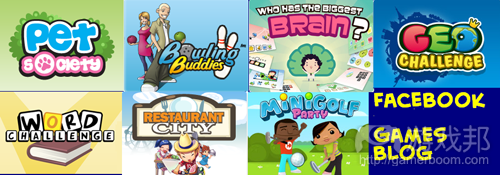成为社交游戏设计师所需具备的七种技巧
作者:Hassan Baig
Hassan Baig对如何设计社交游戏发表了自己的看法,以下是游戏邦编译的相关内容:
我们不能忽视社交游戏在2009年获得的机遇和产生的数十亿美元收入,也无法忽视该行业数字销售的双倍增长(游戏邦注:行业对此已期盼数年之久),经过对Facebook游戏发展的探索研究后,我认为社交游戏设计需要的已不仅仅是软件编程技能。这更像是种艺术工作,而不是科技技能。以下指导可供软件工程师参考,使之发展成为社交游戏设计师:
1、创意性地使用Facebook API。了解如何在技术上使用Facebook API和了解如何创意性地利用其病毒性潜能是完全不同的两件事。也就是说,API功能的互联网记录只能提供一定的帮助,只有实践才能理解其潜在的用处。那么要怎么做呢?尽量多研究Facebook上的游戏,这需要你玩过游戏中各种不同关卡,理解如何利用各种API调用来最大化病毒式效果。记住,好的游戏设计通常都是从完善的研究开始,某些优秀的游戏设计师也是劲头十足的游戏玩家。
2、游戏玩法创意性利用用户社交圈。利用用户的社交圈与多人游戏机制不同,前者是与朋友和熟人互动,而后者是与陌生人一起玩。这二者间有和不同呢?与朋友和陌生人互动,人的心理状态不同。相对陌生人而言,用户在朋友间更容易产生同辈压力、荣耀和复仇感这些心理状态。因而,社交游戏开发者在开始利用用户社交圈设计游戏前需要懂得这些微妙之处。
3、找到流行题材。社交网络不是也永远不会成为游戏门户网站。为什么呢,社交网络用户登录难道不是为了玩游戏吗?事实并非如此,他们的主要目的是与朋友互动,游戏是次要原因。如果了解这个背景,就更容易理解为何某些题材游戏在社交网络中特别流行。比如,硬核机制游戏不适合此类平台,而软性机制休闲游戏使得用户能够以有趣的方式利用他们的社交圈,因而较为适合。
4、了解目标用户。社交游戏的目标用户根本不是16-24岁的男性玩家。因此,应该设计针对目标群体的游戏内容。从这篇文章中,你或许就会发现目标群体。必须说明的是,这并不是说社交平台已经没有其他玩家存在的空间了。
5、提高用户粘性。社交游戏内容通常都很贫乏。比如,典型的社交游戏可能是玩家在某个充满农场的世界中不断增加农场面积并通过各种方法来装饰农场,仅此而已。这种游戏的设计师如何确保用户不断回到游戏中呢?方法是将他们的体验分割成任务。任务式游戏是种延时奖励机制,用户完成任务后过段时间才能取得奖励。这会让用户产生回到游戏中的激情,从而提高游戏粘性。还可以用其他方式实现这种目标,如小游戏、新颖的游戏玩法和社交吸引等。通常开发商将它们与任务游戏混搭以使效果最大化。
6、有效地盈利。只在游戏中设置虚拟货币商店并不能保证获得巨大的ARPU(游戏邦注:每用户平均收益)。只有理解用户心理和情感需求才能有效地进行盈利。盈利战略都可能运用因同伴压力、复仇、彩头和炫耀欲望而形成的沉迷性行为。比如,用户不会付费购买仅仅让游戏行为更加方便的道具,但那些让自己的形象在朋友面前得到改善的东西会卖得更好。弄清楚这些内容,你就会逐渐开始理解能够带来有效盈利的用户心理。
7、刺激用户邀请更多朋友。游戏设计师需要让游戏产生“积极网络效应”,这样用户才会邀请更多的同类朋友参与。正如现实生活中电话的发明一样,设备的效能与使用者数量有直接联系。游戏机制也应该如此,如果有更多朋友玩游戏,用户的游戏体验会变得更为丰富。比如,用户在游戏中拥有一间虚拟酒店,用户社交圈中访问酒店的人数越多,用户就可以赚到越多的钱。在这个例子中,积极网络效应的产生方式很自然,很有机化。为提升游戏的病毒性,游戏设计师应该特别注意此项机制。(本文为游戏邦/gamerboom.com编译,如需转载请联系:游戏邦)
The Anatomy of a Social Game
Hassan Baig
Here is Hassan Baig again with his thoughts on what makes Social Games tick! I thoroughly enjoyed his insight, as I am sure you will. Without further ado, I’m turning it over to Hasan:
This is confessedly a bad time to talk about social gaming – Facebook, the premier social gaming platform, is in the national cross-hair with a ferocity so extreme that any outsider can assume it’s the root of everything that is wrong with Pakistan.
However, we cannot ignore the billion dollar plus opportunity social gaming has been in 2009, we cannot ignore the high double-digit growth this industry is expected to undergo for years to come, we cannot ignore this very real opportunity to establish a Pakistani IP footprint in the global tech-space instead of being content as everyone’s fifth favorite outsource destination.
Integral in the quest for IP development in the Facebook gaming niche is to understand that social game design is going to take much more than mere software engineering skills. This is more of an artform than a technical skill. What follows is a set of guidelines a software engineer can utilize in the bid to become a social game designer:
1) Creative use of the Facebook API: Knowing the Facebook API’s technical usage, and knowing how to utilize its viral potential through creative wizardry are two completely different things. That is to say, internet documentation of the APIs features can only take you so far – to really understand the possibilities you will need to see the API in action. And how does one do that? Research as many games on Facebook as you can – that entails playing through their different levels and understanding how the various API calls are used for maximal viral effect. Remember, good game design always starts from good research. Some of the best game designers out there are avid game players too.
2) Game play that engages social graph of the user creatively: Tapping into a user’s social graph is different from multiplayer mechanics – the former is all about interacting with friends and acquaintances – the latter’s about playing with strangers. What’s the difference then? Human psychology plays out differently when interacting with friends and strangers. Peer pressure, honor and revenge are mechanics one can more readily engender among groups of friends than strangers – so social game developers have to understand these nuances before they get into designing games that tap into users’ social graphs.
3) Identifying popular genres: Social networks are not gaming portals. They never will be. Why? Users on social networks do not primarily log in to play games – no, the prime directive is to network with friends and gaming is the secondary reason. The kind of genres hot in social networking can more easily be understood if seen within the context of this fact. So for instance, games with hardcore mechanics are not suitable for these distribution platforms whereas games with casual, ‘soft’ mechanics which enable users to engage their social graphs in fun ways are the right fit.
4) Know thy target demographic: The target audience in social gaming is not males between the ages of 16-24. Far from it. So therefore, game content is going to be very specialized. A starting point to find out what your target demographic is can be found here. Caveat: This is not to say that there’s no room for niches to exist.
5) How to enhance stickiness: Social gaming content is usually very shallow – for example, a typical social game may be a farm world where users increase the size of their farms and decorate it through various means. And that’s it. So how does such a game’s designer ensure that the users keep coming back? By fragmenting their experience into appointments. Appointment-gaming is a delayed gratification mechanic where users accomplish a task in the present but get a delayed reward in the future. This ensures that users would have an incentive to return to the game – thus enhancing stickiness. There are other ways to achieve this effect too – minigames, novelty gameplay, social hooks etc. Usually they’re mixed in with appointment gaming for maximal effect.
6) Effectively monetizing: Just setting up a virtual cash shop won’t guarantee big ARPU (Average Revenue Per User) numbers. Instead, effective monetization is a product of understanding user psychology and their emotional needs. No monetization strategy is complete without additive hooks which take advantage of peer pressure, revenge, lottery and the desire to show off. So for example, users will not pay much for mere convenience items – on the other hand things which improve their image in front of their friends will sell much better. A good starting point to understand the psychology of effective monetization can be found here.
7) How to incentivize users to invite more friends: The game designer needs to engender ‘positive network effects’ in their game for users to invite more of their kind. Just like the real-life invention of the telephone – where the utility of the device was directly correlated to the number of people using it – the game mechanics should be such that users’ experience becomes richer if more of their friends are playing the game. For instance, one can have a game about a virtual hotel where each user earns more cash the more people from their social graph visit the hotel. This example illustrates a very natural, very organic way of engendering positive network effects. Game designers should pay particular attention to this mechanic in the bid to enhance their games’ virality. (Source: Tech Lahore)








































 闽公网安备35020302001549号
闽公网安备35020302001549号